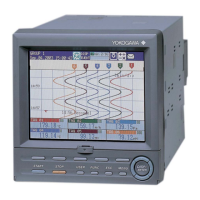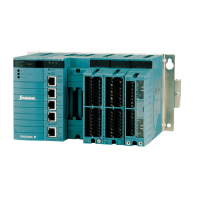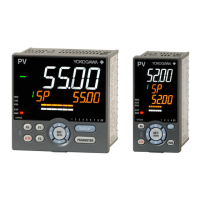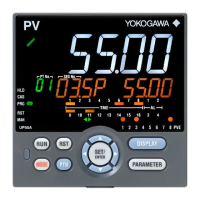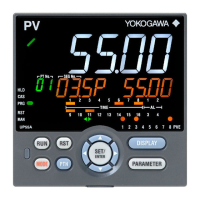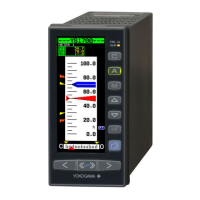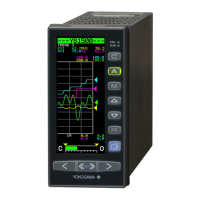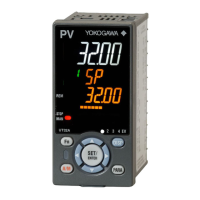App-10 IM 04L20A01-01E
TLOG Computation (MAX, MIN, AVE, SUM, MAX–MIN)
Only measured data and computed data can be used in the TLOG computation. In the
explanation below, e1 is used to represent a measurement or computation channel. You
cannot specify an equation that contains a computing element inside e1. In addition,
only one TLOG computation can be specified in a single computing equation.
TLOG.MAX ( )
Syntax: TLOG.MAX (e1)
Result: Computes the maximum value of channel e1
TLOG.MIN ( )
Syntax: TLOG.MIN (e1)
Result: Computes the minimum value of channel e1
TLOG.AVE ( )
Syntax: TLOG.AVE (e1)
Result: Computes the average value of channel e1
TLOG.SUM ( )
Syntax: TLOG.SUM (e1)
Result: Computes the summation of channel e1
TLOG.P-P ( )
Syntax: TLOG.P-P (e1)
Result: Computes the maximum value – minimum value of channel e1
An Example of Computing Equations
TLOG.MAX(01)+K01
SQR(02)
Examples of Computing Equations That Are Not Allowed
TLOG.AVE(01)+TLOG.AVE(02)
Reason: TLOG appears twice in one equation.
TLOG.AVE(ABS(01))
Reason: A computing element is used inside the parentheses.
Appendix 2 Meaning and Syntax of Equations

